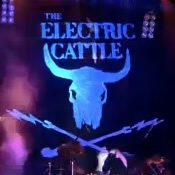Like millions of others, we were watching the Super Bowl on February 3 when the power went out in the Superdome. Our small group decided it must have been caused by the high-powered half-time show. As it turns out, according to Entergy New Orleans, the local utility, the cause of the outage was traced to an electrical relay device.
The next day, Rill Goldstein, BioCycle’s Publisher, suggested that I write this month’s editorial on the power outage during the Super Bowl, highlighting what maybe/could have been if the Superdome had been plugged into the Power of Organics, in this case, on-site renewable energy from organics recycling (aka REFOR). The Green Sports Alliance, the coalition of professional sports teams and their suppliers trying to advance sustainability at their venues and through their purchasing power, has examples of stadiums with solar panels, e.g., Lincoln Financial Field in Philadelphia. So the idea of on-site power is not a stretch.
But the seeds were really planted during Super Bowl 2011, when General Electric aired a 30-second commercial on using organic waste streams — food scraps, yard trimmings, manure, etc. — to make biogas. The spot featured a cow rock bank band with its stage equipment powered by a GE engine fueled by anaerobic digester biogas. Suffice it to say, the GE commercial was by far one of the best Super Bowl ads ever. And those of us in the organics recycling universe were pleased as punch.
So let’s run an alternate scenario for the evening of February 3, 2013. The Louisiana Stadium & Exposition District, which oversees the Superdome, saw the GE ad two years earlier and decided — with guidance from the BioCycle network, of course — to install an on-site anaerobic digestion unit. Food scraps generated at the venue, supplemented with fats, oils and grease and perhaps feedstock from surrounding food establishments, are processed in the anaerobic digester. In deference to GE, let’s assume the stadium has one of its CHP engines, and uses the power to supplement operations as needed. Furthermore, this on-site renewable power source is ready to roll if, for example, the off-site power supply is interrupted (it can happen, you know).
That is one heck of a teachable moment. And what’s awesome, this is reality in today’s world. So instead of just clicking on that You Tube link and rock-and-rolling with the impressive cow band, how about we go viral. That 30-second GE ad of what should be — not what if — needs to be seen by the millions who were inconvenienced by the power going out at the Superdome, and of course local, state and federal elected officials, utilities, public agencies, community sustainability offices, public works staff, and the list goes on.
Better yet, those of us in the REFOR industry must create and go viral with You Tube videos of digester installations, separation and collection of food scraps at venues, on-site composting options (for the digestate and to directly compost as well), biomethane production to fuel venue fleet vehicles and you fill in the blank. Let’s seize the opportunity of this teachable moment. Join us in San Diego, April 8-11 for the BioCycle West Coast Conference and together let’s make it happen.
February 13, 2013 | General











